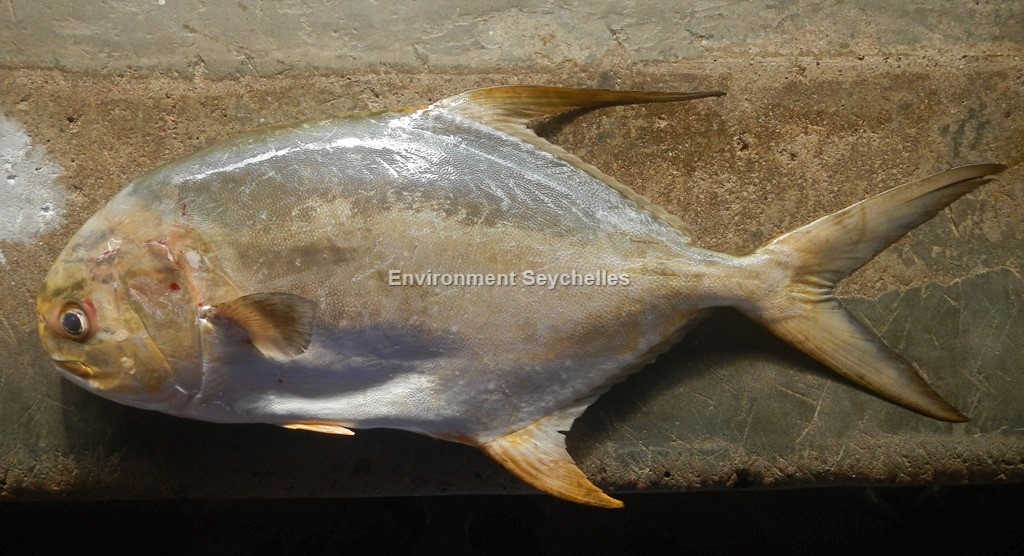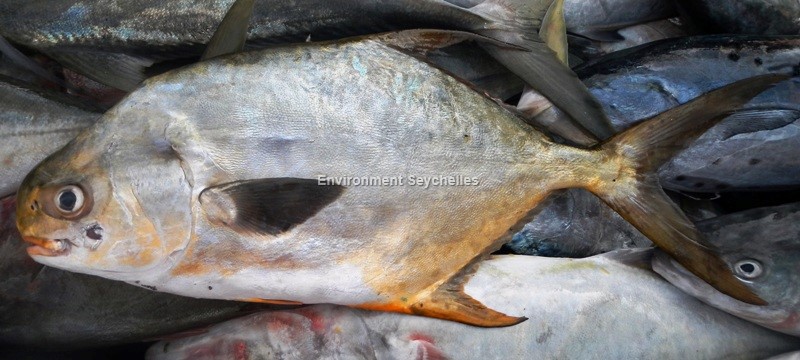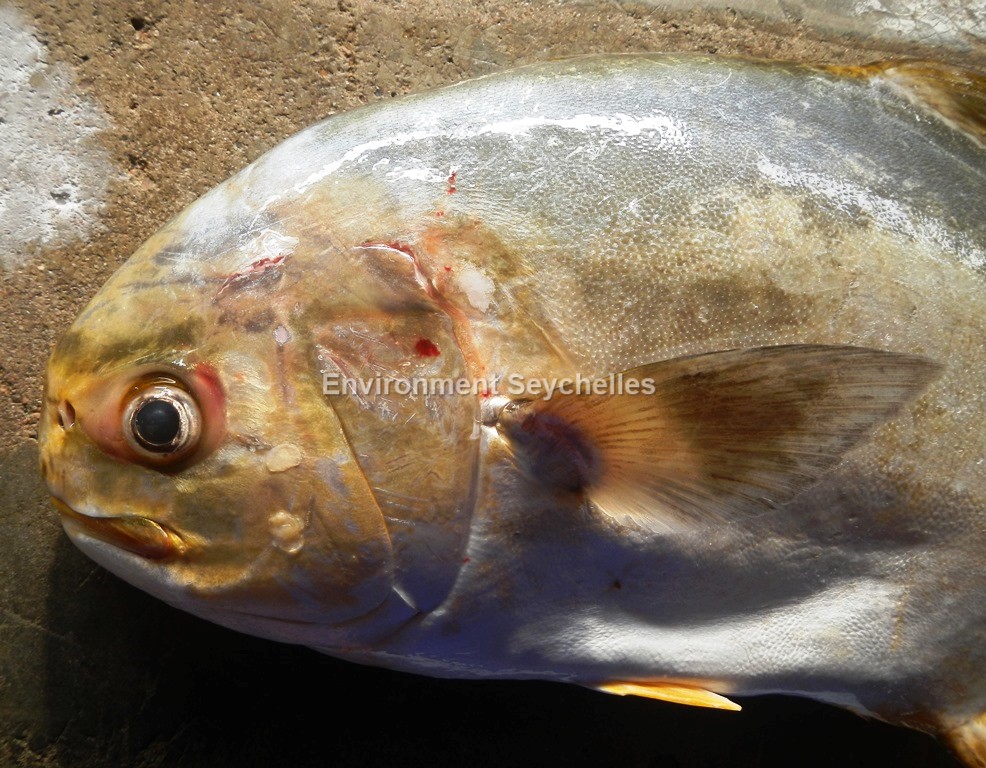Description:
Dorsal spines: 7; Dorsal rays: 18-20; Anal spines: 3; Anal rays: 16-18.
Robust fish, moderately compressed with deep ovoid body. Profile of snout broadly rounded, in adults becoming nearly straight to interorbital region. Mouth is positioned
just below the bluntly rounded snout, both jaws with bands of small villiform teeth. Covered in numerous small scales except the head region which is naked. Lateral line
slightly irregular, weakly convex above pectoral fin, becoming straight posteriorly. Anal and dorsal fins have long falcate lobes. The caudal fin is large and deeply
forked, and the pelvic fins are shorter than the pectorals.
Colour. Head and body generally silvery, blue grey above, paler below. Sometimes with a golden-orange tinge, especially on snout and lower half of body. Second dorsal
fin dark, lobe of fin dusky orange. Anal fin dusky dirty orange, lobe with a brownish anterior margin. Caudal fin dark to dirty orange with leading edges of fin darkest.
Pelvic fins white to dirty orange, pectoral fins dark. Juveniles are silvery with pale fins, except for brownish to brownish-orange lobes of median fins and anterior half
of pelvic fins.
Size:
Maturity: Lm unknown. Range unknown. Max Length: 65 cm TL. Commonly 40cm TL.
Habitat and Ecology:
Inhabits shallow, coastal waters over coral and rocky reefs (depth 1-7m). Occasionally observed in small schools. Diet consists mainly of bivalve molluscs that live in the
sandy surf zone and other hard-shelled invertebrates. Uses strong pharyngeal teeth to crack shells.
Fishery Status:
This species is not protected or subject to fishery regulations. It is caught in the handline and net fisheries where it is a regular but not frequent or abundant component of the catch.
Notes:
References:
Bray, D.J. (2017). Trachinotus blochii in Fishes of Australia, http://fishesofaustralia.net.au/home/species/2993 (22/05/19).
FAO 2016-2019. Cultured Aquatic Species Information Programme. Trachinotus spp. http://www.fao.org/fishery/culturedspecies/Trachinotus_spp/en (21/05/19).
Froese, R. & D. Pauly. (Eds.) (2019). FishBase. https://www.fishbase.se/summary/Trachinotus-blochii.html (21/05/19).
McGrouther, M. (2018). Snubnose Dart, Trachinotus blochii (Lacépède, 1801). https://australianmuseum.net.au/learn/animals/fishes/snubnose-dart-trachinotus-blochii/ (22/05/19).
Smith-Vaniz, W.F. & Williams, I. (2016). Trachinotus blochii (errata version 2017). The IUCN Red List 2016: http://dx.doi.org/10.2305/IUCN.UK.2016-3.RLTS.T20436497A46664144.en. (21/05/19).
Citation:
Nevill, J.E.G. (2019). Trachinotus blochii, Snubnose pompano. Seychelles Seatizens. www.seatizens.sc. https://seatizens.sc/species/trachinotus-blochii-lacepede-1801/ (edited 27/06/22).



